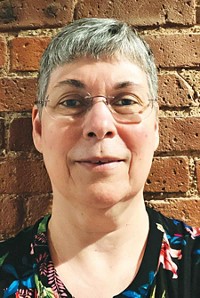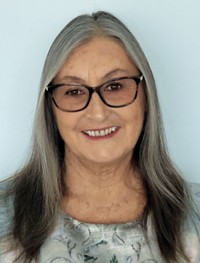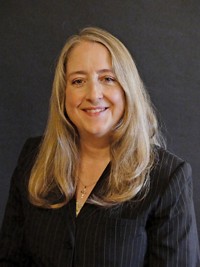Advertisement
Grab your lab coat. Let's get started
Welcome!
Welcome!
Create an account below to get 6 C&EN articles per month, receive newsletters and more - all free.
It seems this is your first time logging in online. Please enter the following information to continue.
As an ACS member you automatically get access to this site. All we need is few more details to create your reading experience.
Not you? Sign in with a different account.
Not you? Sign in with a different account.
ERROR 1
ERROR 1
ERROR 2
ERROR 2
ERROR 2
ERROR 2
ERROR 2
Password and Confirm password must match.
If you have an ACS member number, please enter it here so we can link this account to your membership. (optional)
ERROR 2
ACS values your privacy. By submitting your information, you are gaining access to C&EN and subscribing to our weekly newsletter. We use the information you provide to make your reading experience better, and we will never sell your data to third party members.
Environment
New Opportunities For Divisions
by Kevin J. Edgar, Chair, Committee on Divisional Activities
March 2, 2009
| A version of this story appeared in
Volume 87, Issue 9
TECHNICAL DIVISIONS are vital to the success of the American Chemical Society. They create the bulk of the programming that is the backbone of the highly successful ACS national meetings. The technical content created by division members forms the basis of the internationally renowned ACS journals, symposium series books, and, increasingly, Web-based content. The communities created by the divisions are the scientific homes for many ACS members around the world. Indeed, one perspective is that ACS meetings are actually groups of 34 divisional minisymposia.
I'd like to make you aware of several new opportunities for divisions to create value for their members arising from recent work by divisions, the Committee on Divisional Activities (DAC), and many others. Multidisciplinary programming has been a particular focus of ACS for the past several years. Since the fall of 2006, each ACS national meeting has had an organizing theme. In Salt Lake City, the theme will be Nanoscience, led by Paul S. Weiss, editor-in-chief of ACS Nano. In Washington, D.C., the theme will be Chemistry & Global Security, led by Sadiq Shah, associate vice president of the Office of Research & Economic Development at Western Kentucky University.
Successive themes have catalyzed more and more multidivisional, multidisciplinary collaboration. A new ACS entity, the Multidisciplinary Program Planning Group (MPPG), was created to coordinate thematic programming, enhance interdivisional program collaboration, and create experiments to enhance national meeting program formats for attendees. All divisions are encouraged to send representatives to the MPPG meetings during national meetings. Mike Morello is the 2009 MPPG chair. Contact Mike at mppg@acs.org with thematic ideas and questions. Visit the home page of MPPG for more information about MPPG and potential future themes. The link to MPPG is on the Technical Divisions home page. Visit www.acs.org and click on "Technical Divisions" in the "Membership" box.
Divisional programming collaboration will also be enhanced this year by the new division allocation formula approved by the ACS Council in Philadelphia. This formula corrects the situation in which only the designated lead division received credit for attendance at cosponsored program sessions and replaces that with a formula that rewards collaboration by giving attendee credit to all sponsoring divisions of a truly cosponsored session.
The chemical enterprise is dynamic, and so the organization of the divisions is constantly changing to reflect the needs of our members. We have a new probationary division, the Division of Catalysis Science & Technology (CATL), which arose from the highly successful Catalysis Secretariat. See their page on the ACS website for information about their officers and how to contact them if you are interested in joining CATL, programming with them, or interacting with CATL in any other way.
ACS has a new Fellows designation, approved by the ACS Board of Directors in December on the recommendation of a Presidential Task Force cochaired by a DAC subcommittee chair. Divisions will play a vital role in the creation of each year's class of ACS Fellows because we expect many of the nominations to come from divisions, which are most knowledgeable about the scientific leaders in their fields. This is a great opportunity for you to promote recognition of your outstanding members. Details on how to nominate members to become Fellows, along with the nomination form, are located at www.acs.org/fellows.
Divisions have enriched their offerings to members in recent years by creating recordings or other versions of papers presented at ACS national meetings, viewable online by division members and in some cases available to others for a fee. This concept of capturing meeting content electronically and offering it as a member resource is growing. A task force sponsored by the Board Committee on Professional & Member Relations and DAC recently made recommendations about how best to implement a general expansion of this effort, keeping in mind the necessary precautions about intellectual property rights and other legitimate concerns that must be properly dealt with to make this program work.
A pilot program in Salt Lake City will seek to capture presentations from the Kavli Foundation ACS Presidential Plenary Session on Challenges in Nanoscience, which was organized by Weiss, as well as other sessions related to the nanoscience theme, the Priestley Medal address, and more. The content will be available online after the meeting. Stay tuned for further experiments and guidance about how we can enhance and expand this exciting new member benefit.
DIVISIONS ARE innovators within ACS, and DAC promotes innovative division activities. Part of the division allocation each year is set aside for Innovative Project Grants. Prior to 2009, divisions submitted proposals once each year, and awards were announced after judging by the DAC Divisional Enhancement Subcommittee. For 2009 and beyond, that subcommittee will make two annual solicitations, accepting proposals until shortly before each ACS national meeting. This will permit divisions to time their funding proposals more closely to the proposed activity and enhance their ability to plan. We expect divisions to make full use of these new proposal windows! Details on deadlines and application forms are available on the DAC portion of the ACS website, which is accessible from the "Technical Divisions" home page.
The future for ACS technical divisions is bright, and their contributions to ACS, individually and in collaboration, are growing. We look forward to helping divisions create this new value for our society.
Views expressed on this page are those of the author and not necessarily those of ACS.






Join the conversation
Contact the reporter
Submit a Letter to the Editor for publication
Engage with us on Twitter